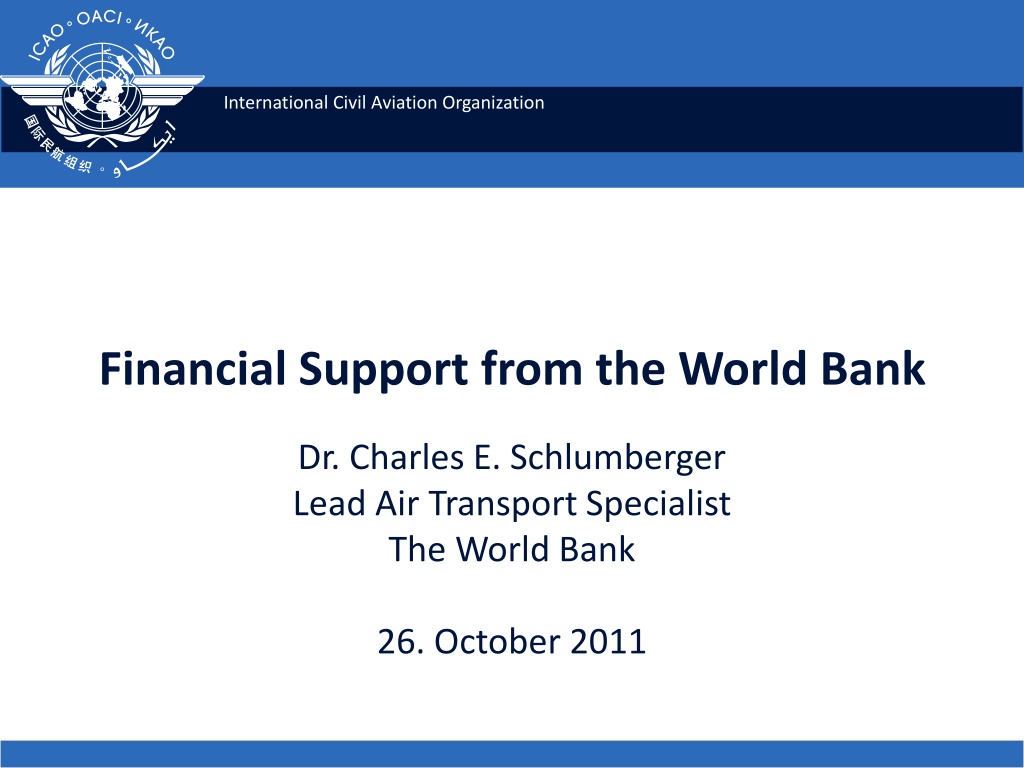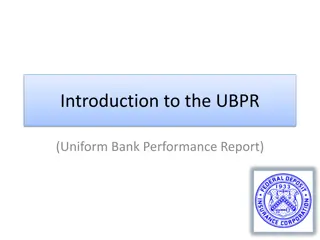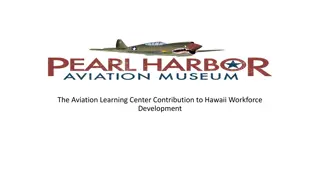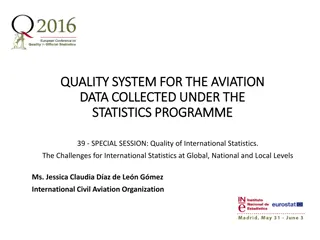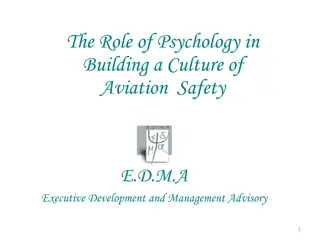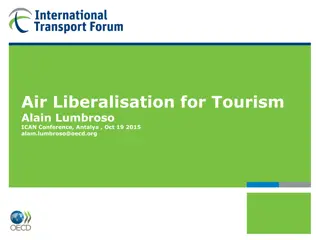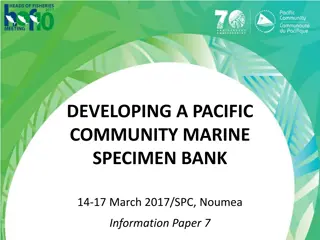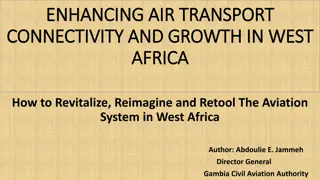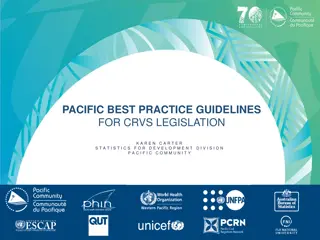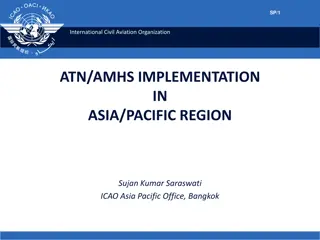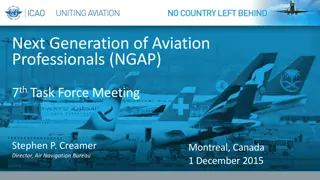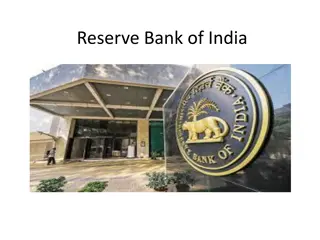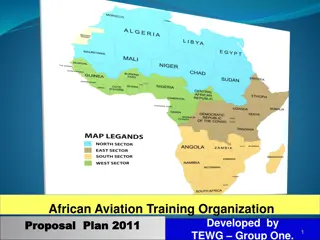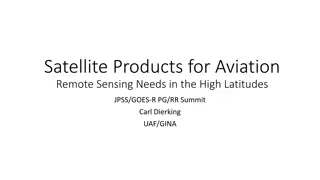World Bank Support for Pacific Aviation Development
The World Bank has been actively involved in providing financial support for aviation development projects, particularly in the Pacific region. Through initiatives like the Pacific Aviation Investment Program and support for the Pacific Aviation Safety Office, the World Bank aims to enhance infrastructure, promote sector reform, and strengthen airport operations to improve connectivity and bolster economic growth in the region.
Download Presentation

Please find below an Image/Link to download the presentation.
The content on the website is provided AS IS for your information and personal use only. It may not be sold, licensed, or shared on other websites without obtaining consent from the author. Download presentation by click this link. If you encounter any issues during the download, it is possible that the publisher has removed the file from their server.
E N D
Presentation Transcript
International Civil Aviation Organization Financial Support from the World Bank Dr. Charles E. Schlumberger Lead Air Transport Specialist The World Bank 26. October 2011
Outline The World Bank Air Transport Portfolio The Pacific Aviation Investment Program Support for the Pacific Aviation Safety Office Financial Support from the World Bank 2
The World Bank Air Transport Portfolio 30 major projects in all regions of IBRD and IDA 28 active IFC investments and several advisory mandates total active portfolio financed by loans or grants of IBRD and IDA is at US$569 million IFC air transport investment portfolio is at US$ 679 million Overall, the WBG air transport portfolio volume is at US$ 1.247 billion Financial Support from the World Bank 3
The Pacific Aviation Investment Program The Pacific Aviation Investment Program is a grant of US$ 147.47 million (US$ 73.66 million Phase 1; US$ 73.81 million Phase 2) It will focus on three main areas: (i) infrastructure investments; (ii) aviation sector reform; (iii) strengthening the operations and management of regional airports. Project title (Insert, Header & Footer) 4
The Pacific Aviation Investment Program Component A: Aviation Infrastructure Investments (US$ 118.42 million) Airports, ATC to meet ICAO SARP Component B: Aviation Sector Reform (US$ 12.10 million) CAA, PASO (US$ 2.4 million) Component C: Strengthening Airport Operations and Management Capacity (US$ 7.86 million) Component D: Project Support (US$ 9.09 million) Project title (Insert, Header & Footer) 5
Support for the Pacific Aviation Safety Office Regional Context the Pacific Island Countries are characterized by: small populations scattered over many islands in one of the most remote and geographically dispersed countries in the world Aviation plays a vital role in providing national, regional, and international connectivity tourism is a high contributor to the national GDPs air transportation allows export of high-value, time- sensitive products such as fresh fish, flowers, marine plants, etc. sea transportation is often not a viable alternative for passenger transport Financial Support from the World Bank 6
Support for the Pacific Aviation Safety Office Institutional Context PASO was established in 2004 to provide safety and security oversight in the aviation sector for all PIC countries, as individual states have limited resources PASO provides services in 5 areas: airworthiness, flight operations, aerodromes, aviation security, and personnel licensing For many states PASO is the link with ICAO and acts as the only technical advisory body Non-profit organization, services provided on a cost- recovery basis Subscription fees cover fixed costs Variable fees cover costs associated with inspections and other activities Financial Support from the World Bank 7
Support for the Pacific Aviation Safety Office - Options for PASO s Scope Financial Support from the World Bank 8
Support for the Pacific Aviation Safety Office Funding of the Organization Model 1 (current situation): membership fees + service fees paid by member countries Places a financial burden on the countries budgets, and hence creates a disincentive to use PASO s services For different reasons countries may fail to secure funding Model 2: safety levy paid by passengers PASO s costs would be funded through implementation of a fee per passenger, or safety levy Eliminates financial burden on member countries Creates incentive to engage PASO, as countries would not have to make any payments Different implementation options Financial Support from the World Bank 9
Support for the Pacific Aviation Safety Office Options for Restructuring Option 1: Front-office funded with membership fees Option 2: Current situation Option 3: Programmed oversight funded with safety levy Option 3A: HQ in Port Vila, Vanuatu Option 3B: HQ in Wellington, New Zealand Option 3C: HQ in Nuku alofa, Tonga Option 3D: HQ in Apia, Samoa Option 4: Full Technical Regulator funded with safety levy Financial Support from the World Bank 10
Support for the Pacific Aviation Safety Office Assessing the Safety Levy Financial analysis carried out to determine alternative ways to implement a safety levy Projection of PASO s full cost structure Direct operating expenses: technical team salaries, travel expenses Overhead: administrative team salaries, office expenses Current traffic volumes for first year, conservative projection of future traffic Resulting safety levy requirements per departing international passenger Safety levy requirements cover first year operating expenses, generates surplus to capitalize PASO in following years Financial Support from the World Bank 11
Support for the Pacific Aviation Safety Office PASO Members Traffic Levels 3,500,000 3,000,000 2,500,000 2,000,000 1,500,000 1,000,000 500,000 0 PNG Tuvalu Tonga Vanuatu Niue Kiribati Nauru Samoa Cook Islands Fiji Solomon Islands Domestic International Financial Support from the World Bank 12
Support for the Pacific Aviation Safety Office Safety Levy 1st Year (AUD) Option 1: Only international passengers pay the safety levy Project title (Insert, Header & Footer) 13
Support for the Pacific Aviation Safety Office Safety Levy 1st Year (AUD) Option 2: International and domestic passengers pay the same Project title (Insert, Header & Footer) 14
Support for the Pacific Aviation Safety Office Safety Levy 1st Year (AUD) Option 3: International passengers pay 2x than domestic passengers Project title (Insert, Header & Footer) 15
Support for the Pacific Aviation Safety Office Safety Levy vs. Airport Charges Project title (Insert, Header & Footer) 16
